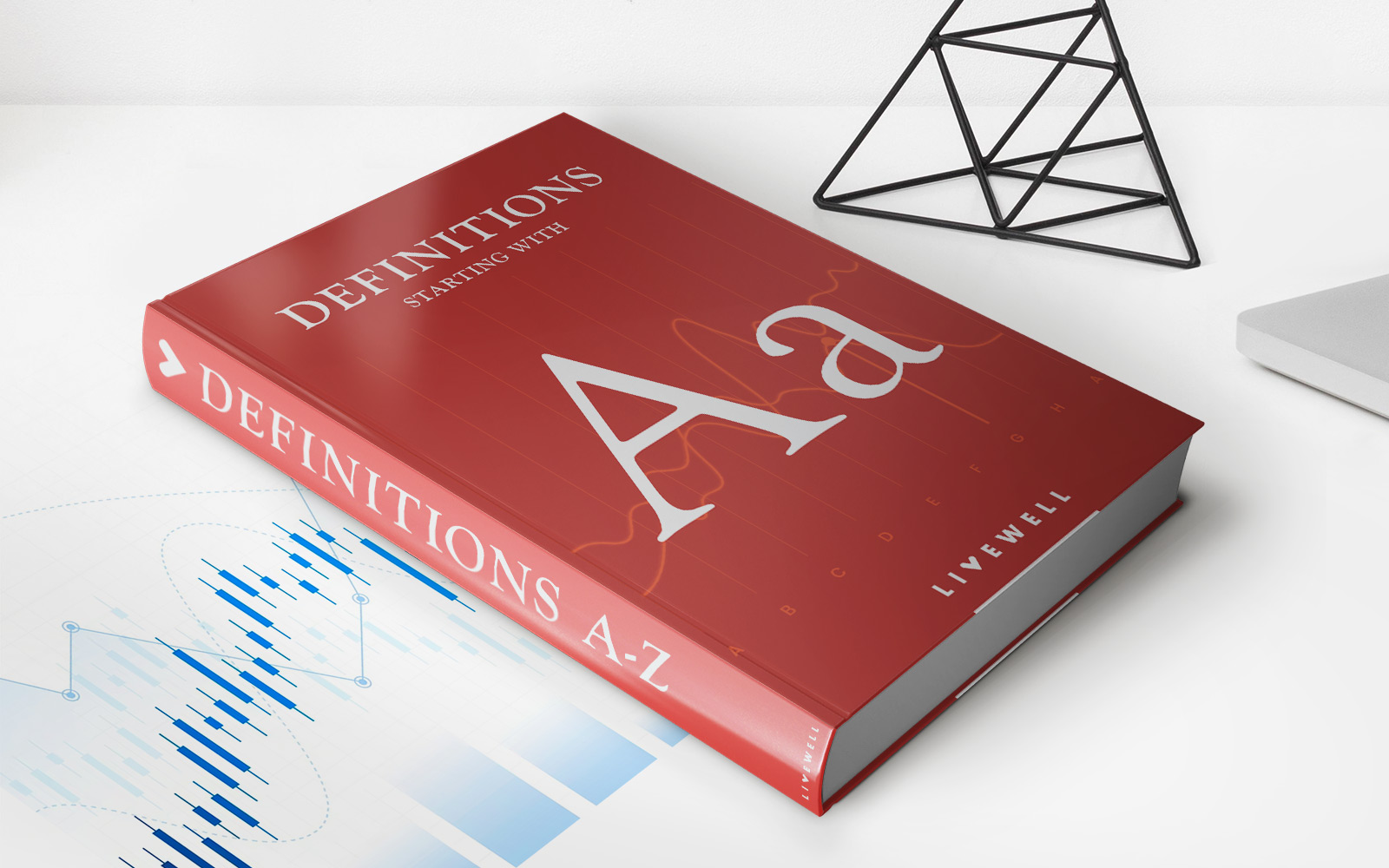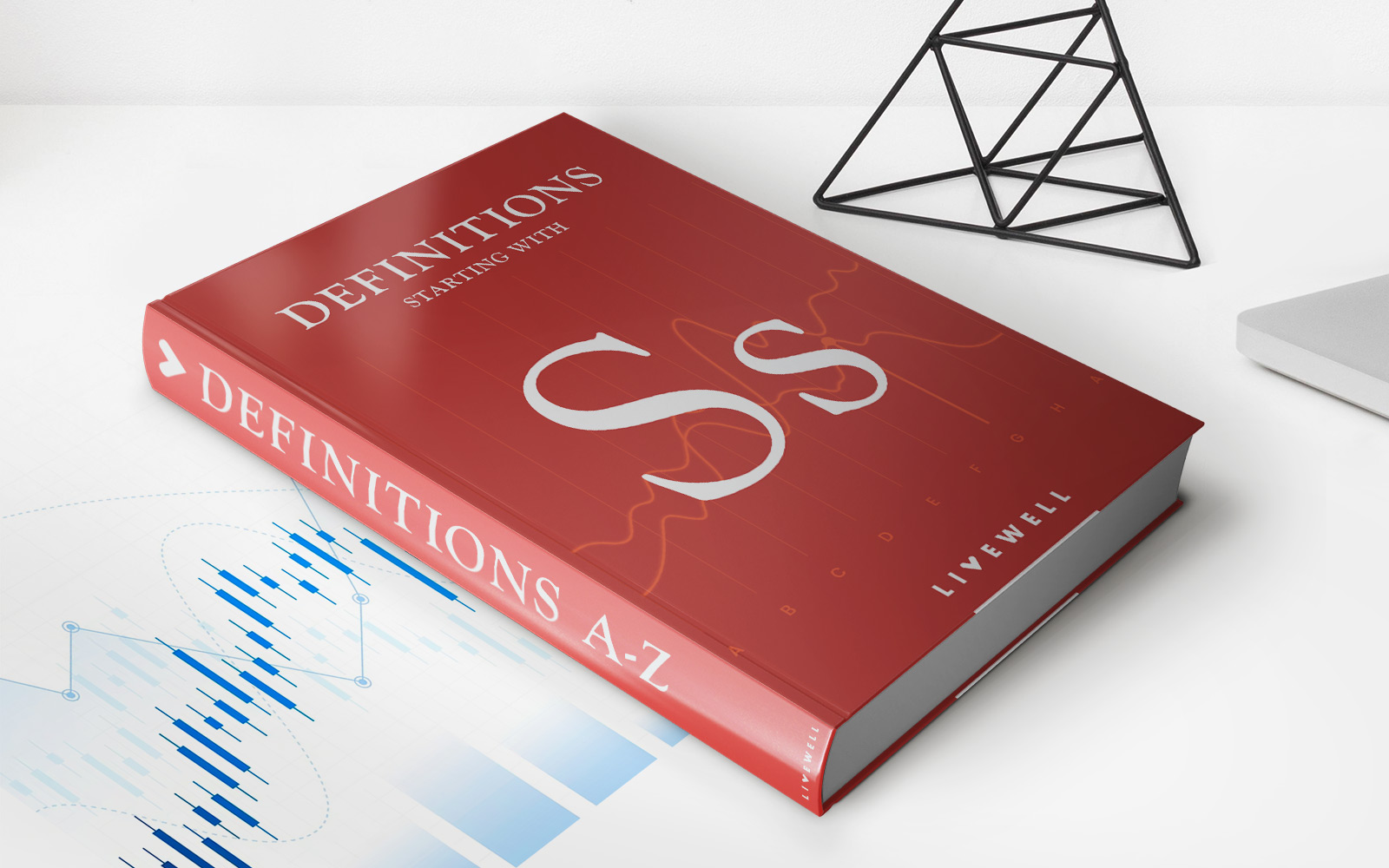

Finance
What Is An Estate In Life Insurance?
Published: October 14, 2023
Learn about estates in life insurance and their impact on your finances. Discover how this important aspect of life insurance can protect and preserve your wealth.
(Many of the links in this article redirect to a specific reviewed product. Your purchase of these products through affiliate links helps to generate commission for LiveWell, at no extra cost. Learn more)
Table of Contents
- Introduction
- Definition of an Estate in Life Insurance
- Importance of Identifying the Estate in Life Insurance
- Types of Estates in Life Insurance
- Determining the Estate in Life Insurance
- Factors Affecting the Value of an Estate in Life Insurance
- Estate Planning and Life Insurance
- Common Mistakes to Avoid Regarding the Estate in Life Insurance
- Conclusion
Introduction
Life insurance is a critical financial tool that provides protection and financial security to individuals and their families. It ensures that your loved ones are taken care of in the event of your untimely demise. When it comes to life insurance, there are several important concepts that policyholders must understand, one of which is the estate in life insurance.
An estate in life insurance refers to the total value of assets and liabilities that an individual leaves behind upon their death. Understanding and properly managing the estate is crucial for both insurance companies and beneficiaries, as it determines the adequacy of the life insurance coverage and the distribution of the insured’s assets.
Identifying the estate in life insurance involves evaluating and assessing various components such as the insured’s financial assets, debts, and other financial obligations. It provides a clear picture of the individual’s net worth and enables the determination of the appropriate life insurance coverage amount.
In this article, we will delve into the definition and importance of the estate in life insurance, explore the types of estates, discuss how to determine the estate in life insurance, examine the factors affecting its value, highlight its relationship with estate planning, and cover common mistakes to avoid. This comprehensive guide aims to provide you with a deeper understanding of the estate in life insurance and equip you with the knowledge needed to make informed decisions regarding your life insurance coverage and estate planning.
Definition of an Estate in Life Insurance
When we talk about an estate in the context of life insurance, we are referring to the total value of an individual’s assets and liabilities at the time of their death. It encompasses everything that the individual owns, including real estate, investments, bank accounts, personal belongings, and any other valuable possessions.
Additionally, the estate also includes any outstanding debts or financial obligations that the individual had before passing away. This can include mortgage loans, credit card debts, student loans, and any other liabilities that need to be settled.
The estate is a crucial factor in life insurance because it helps determine the financial needs of the beneficiaries. It allows the insurer and the beneficiaries to assess whether the existing life insurance coverage is sufficient to cover the expenses, debts, and financial obligations of the insured.
Moreover, the estate is used to calculate estate taxes, which are imposed on the transfer of the deceased individual’s assets to their beneficiaries. Estate taxes can have a significant impact on the distribution of the estate, as the taxes need to be paid before the assets can be transferred to the intended beneficiaries.
In summary, an estate in life insurance refers to the total value of an individual’s assets and liabilities at the time of their death. It includes all personal belongings, investments, and financial obligations. Understanding the estate value is critical for determining the adequacy of life insurance coverage and assessing the financial needs of the beneficiaries.
Importance of Identifying the Estate in Life Insurance
Identifying the estate in life insurance is of utmost importance as it serves several crucial purposes in ensuring the financial security of the insured and their beneficiaries. Here are the key reasons why the estate needs to be accurately identified:
Determining Adequate Coverage: Knowing the value of the estate helps insurance providers assess whether the existing life insurance coverage is sufficient to meet the financial needs of the beneficiaries. If the estate value is high, it may indicate a need for higher coverage to adequately protect the beneficiaries from potential financial burdens.
Estate Planning and Wealth Transfer: Understanding the estate value allows individuals to effectively plan the transfer of their wealth upon their death. It helps in creating a comprehensive estate plan, including the allocation of assets, establishment of trusts, and distribution of property. By knowing the value of the estate, individuals can ensure that their assets are distributed according to their wishes and to the benefit of their loved ones.
Estate Tax Planning: Identifying the estate is vital for estate tax planning. Estate taxes can significantly impact the distribution of assets and can lead to financial challenges for beneficiaries. Knowing the estate value helps in developing strategies to minimize the tax burden, such as using trusts, gifting assets, or establishing charitable trusts.
Debt and Liability Settlement: The estate encompasses both assets and liabilities. By identifying the estate, individuals can ensure that their outstanding debts and financial obligations are addressed and settled appropriately. This helps to prevent complications and legal issues for the beneficiaries and ensures that the estate is distributed fairly.
Financial Planning and Risk Management: The estate value also plays a crucial role in overall financial planning and risk management. By knowing the total value of assets and liabilities, individuals can make informed decisions regarding investments, insurance coverage, and retirement planning. It provides a holistic view of their financial situation and helps in managing potential risks and uncertainties.
Identifying the estate in life insurance is essential for ensuring that the financial needs of the beneficiaries are met, facilitating estate planning, minimizing tax burdens, settling debts and liabilities, and enabling effective financial planning and risk management. It is a crucial step in safeguarding the financial security and well-being of both the insured and their loved ones.
Types of Estates in Life Insurance
In life insurance, there are different types of estates that can be classified based on various factors. Understanding these different types of estates is essential as it provides insights into how the assets and liabilities are categorized and distributed. Here are some of the common types of estates in life insurance:
- Gross Estate: The gross estate refers to the total value of an individual’s assets at the time of their death. It includes real estate, investments, personal belongings, and other valuable possessions. Additionally, it incorporates the value of any life insurance policies owned by the deceased individual.
- Net Estate: The net estate is calculated by subtracting the total liabilities and debts from the gross estate. It represents the value of the assets that will be available for distribution to the beneficiaries after settling the outstanding debts.
- Probate Estate: The probate estate refers to the portion of the estate that is subject to the probate process. This involves the legal validation of the deceased individual’s will, payment of debts, and the distribution of assets according to the will or applicable laws. Not all assets are included in the probate estate. For example, assets held jointly with right of survivorship, assets with designated beneficiaries, or assets held in trusts may bypass the probate process.
- Non-Probate Estate: The non-probate estate comprises assets that are exempt from the probate process. These assets are transferred directly to the designated beneficiaries outside of the will. Examples of non-probate assets include life insurance policies with named beneficiaries, retirement accounts, and jointly owned assets with the right of survivorship.
- Taxable Estate: The taxable estate refers to the portion of the estate that is subject to estate taxes. Estate taxes are imposed on the transfer of assets to beneficiaries upon the death of the insured. The taxable estate includes all assets included in the gross estate, minus any allowable deductions and exemptions.
- Intestate Estate: An intestate estate refers to the estate of an individual who passes away without a valid will. In such cases, the distribution of assets is governed by the laws of intestacy, which vary depending on the jurisdiction. The intestate estate is distributed to the legal heirs according to predetermined rules.
These types of estates provide a framework for understanding how assets and liabilities are categorized and distributed in life insurance. By recognizing the specific type of estate involved, individuals can ensure that proper planning and actions are taken to facilitate the smooth transfer of assets to beneficiaries and minimize any legal complications or tax burdens that may arise.
Determining the Estate in Life Insurance
Determining the estate in life insurance involves assessing the total value of an individual’s assets and liabilities at the time of their death. This process is critical for insurance providers, beneficiaries, and estate planners as it helps determine the adequacy of coverage and facilitates the proper distribution of assets. Here are the key steps and factors involved in determining the estate in life insurance:
- Inventory of Assets: The first step is to create an inventory of all the assets owned by the deceased individual. This includes real estate, investments, bank accounts, personal belongings, and any other valuable possessions. It is essential to gather all relevant documentation such as property deeds, investment statements, and bank statements to accurately assess the value of these assets.
- Evaluation of Assets: Once the assets are identified, they need to be evaluated to determine their fair market value. This may involve hiring appraisers or experts to assess the worth of valuable items such as art collections or antique furniture. For financial assets such as stocks or bonds, their market value can be determined based on prevailing market rates.
- Assessment of Debts and Liabilities: Alongside evaluating assets, debts and liabilities also need to be considered. This entails gathering information about outstanding mortgage loans, credit card debts, student loans, and any other financial obligations that the deceased individual had. The total amount of debts is subtracted from the total asset value to determine the net estate.
- Estate Tax Considerations: Estate taxes can have a significant impact on the value of the estate. It is important to consider the applicable tax laws and regulations to accurately calculate the taxable estate. Consulting with tax professionals or estate planners can help navigate the complexities of estate taxes and identify any allowable deductions or exemptions.
- Review of Life Insurance Coverage: After determining the estate value, it is crucial to review the existing life insurance coverage to assess its sufficiency. Adequate coverage ensures that the beneficiaries are adequately protected and can meet their financial obligations and needs. If the coverage is deemed insufficient, it may be necessary to consider purchasing additional life insurance or adjusting the coverage amount.
By following these steps and considering the various factors involved, the estate in life insurance can be accurately determined. This information not only helps insurance providers assess coverage adequacy but also assists beneficiaries and estate planners in proper asset distribution and estate planning.
Factors Affecting the Value of an Estate in Life Insurance
The value of an estate in life insurance can vary based on several factors. These factors play a significant role in determining the overall worth of the estate and can influence the distribution of assets to beneficiaries. Here are some of the key factors that can affect the value of an estate in life insurance:
- Financial Assets: The value of financial assets such as bank accounts, investment portfolios, stocks, and bonds can have a substantial impact on the overall worth of the estate. Fluctuations in financial markets can cause the value of these assets to change over time, and they need to be regularly evaluated to provide an accurate assessment of the estate.
- Real Estate: The value of real estate properties owned by the deceased individual is an essential factor in determining the estate value. The market value of properties, including homes, land, commercial buildings, and rental properties, can significantly impact the overall estate worth.
- Personal Belongings and Collectibles: Personal belongings such as cars, jewelry, artwork, and collectibles can contribute to the value of the estate. The appraisal of these items by professionals is necessary to provide an accurate assessment of their worth.
- Liabilities and Debts: The presence of outstanding debts and financial obligations can decrease the value of the estate. Mortgage loans, credit card debts, student loans, and other liabilities need to be considered and deducted from the overall value of the assets to determine the net estate.
- Insurance Policies: In addition to the value of the assets, the insurance policies owned by the deceased individual also contribute to the estate value. Life insurance policies with cash value, such as whole life or universal life insurance, can increase the overall worth of the estate.
- Estate Taxes: Estate taxes can significantly impact the value of an estate. The applicable tax laws, including exemption limits and tax rates, will affect the taxable portion of the estate. Proper estate tax planning can help minimize the tax burden and preserve more of the estate’s value.
- Beneficiary Designations: The designation of beneficiaries on various accounts and policies can impact the distribution of assets. Assets with designated beneficiaries, such as retirement accounts and life insurance policies, bypass probate and are distributed directly to the beneficiaries, potentially affecting the overall value of the estate that goes through the probate process.
These factors interact with each other, and their influence on the estate value can vary depending on the individual’s circumstances. It is crucial to consider and assess all these factors accurately to determine the true worth of the estate in life insurance and ensure the fair and appropriate distribution of assets to the beneficiaries.
Estate Planning and Life Insurance
Estate planning involves making a comprehensive plan for the transfer of assets, property, and wealth upon an individual’s death. It ensures that their assets are distributed according to their wishes and minimizes the financial burden on their loved ones. Life insurance plays a crucial role in estate planning and offers several benefits. Here are the key aspects of how life insurance intersects with estate planning:
Financial Security for Beneficiaries: Life insurance provides a financial safety net for beneficiaries. The death benefit received from a life insurance policy can help replace lost income, settle outstanding debts, and cover funeral expenses. This ensures that the beneficiaries are financially secure and can maintain their quality of life even in the absence of the insured.
Estate Liquidity: Upon the death of the insured, the estate may need to settle outstanding debts or tax obligations. If the majority of the estate’s value is tied up in illiquid assets such as real estate or business holdings, it can be challenging to access funds for these financial obligations. Life insurance can provide liquidity by offering a readily available cash payout that can be used to settle these financial obligations without the need to sell assets.
Estate Equalization: In cases where an individual has multiple heirs, life insurance can help equalize the distribution of assets. For example, if a significant portion of the estate is earmarked for one particular beneficiary, the insured can designate the other beneficiaries as beneficiaries of a life insurance policy to provide them with an equal share of the estate’s value.
Minimizing Estate Taxes: Estate taxes can be a significant burden on the transfer of assets to beneficiaries. Life insurance can be used as a tool to provide liquidity to pay for estate taxes, ensuring that the beneficiaries can receive the full value of the estate without the burden of taxes.
Protecting Business Succession: For individuals who own a business, life insurance can play a critical role in business succession planning. It can ensure that the business continues smoothly upon the owner’s death, providing funds to cover any financial obligations, facilitate the transfer of ownership, or provide compensation to family members who are not involved in the business.
Charitable Contributions: Life insurance allows individuals to make charitable contributions as part of their estate planning. By designating a charitable organization as the beneficiary of a life insurance policy, individuals can leave a meaningful legacy and provide financial support to causes they care about.
Estate planning and life insurance go hand in hand, providing individuals with the opportunity to protect their loved ones, ensure the efficient transfer of assets, minimize taxes and financial burdens, and leave a lasting impact through charitable contributions. Consulting with an experienced estate planner and insurance professional can help navigate the complexities of estate planning and identify the most suitable life insurance strategies to achieve one’s goals and priorities.
Common Mistakes to Avoid Regarding the Estate in Life Insurance
When it comes to managing the estate in life insurance, there are several common mistakes that individuals should be aware of and avoid. These mistakes can have significant implications for the distribution of assets and the financial well-being of beneficiaries. Here are some key mistakes to watch out for:
- Inadequate Coverage: Failing to accurately assess the value of the estate can lead to inadequate life insurance coverage. This can result in beneficiaries not receiving sufficient funds to cover their financial needs, settle outstanding debts, or maintain their standard of living. It is crucial to regularly review and update coverage to ensure it aligns with the current value of the estate.
- Failure to Update Beneficiary Designations: Not updating beneficiary designations on life insurance policies can lead to unintended consequences. Life changes such as marriages, divorces, births, or deaths may warrant modifications to beneficiaries. Failing to update these designations can result in the wrong individuals receiving the insurance proceeds or not reflecting the intended distribution of assets.
- Lack of Coordination with Estate Planning: Failure to integrate life insurance into the overall estate planning can lead to inconsistencies and complications. Life insurance policies should be aligned with the overall goals and strategies outlined in the estate plan. This includes considering estate tax implications, liquidity needs, and the intended distribution of assets.
- Underestimating the Value of Non-Probate Assets: Non-probate assets such as retirement accounts, jointly owned assets, or life insurance policies with designated beneficiaries can bypass the probate process. Failing to account for these assets in the estate planning process may lead to an inaccurate assessment of the overall estate value and shortcomings in asset distribution.
- Overlooking Estate Tax Planning: Estate taxes can significantly impact the value of an estate. Failing to incorporate proper estate tax planning strategies, such as creating trusts or leveraging gifting opportunities, can result in unnecessary tax burdens for beneficiaries and the reduction of the estate’s value. Seeking professional guidance can help minimize estate taxes and maximize the value passed on to beneficiaries.
- Not Considering Changing Financial Circumstances: Life circumstances can change over time, including financial obligations, investments, and liabilities. Failing to regularly reassess the estate in light of these changes can lead to outdated assumptions and inaccurate estate valuations. Regular reviews of the estate value and life insurance coverage can help ensure that both align with current financial circumstances.
Avoiding these common mistakes is crucial to ensure that the estate in life insurance is managed effectively and that the intended beneficiaries receive the full financial protection they deserve. Consulting with financial advisors, estate planning experts, and insurance professionals can provide valuable guidance to help individuals navigate the complexities of the estate in life insurance and avoid these pitfalls.
Conclusion
Understanding the concept of the estate in life insurance is essential for both policyholders and beneficiaries. It provides a clear picture of an individual’s assets and liabilities at the time of their death, enabling insurance providers to assess coverage adequacy and ensuring beneficiaries receive the financial support they need. By identifying the estate, individuals can engage in effective estate planning, minimize tax burdens, and facilitate the smooth transfer of assets.
Throughout this article, we explored the definition and significance of the estate in life insurance. We discussed the different types of estates and the factors that can influence their value, such as financial assets, real estate, liabilities, and tax considerations. We also emphasized the role of life insurance in estate planning, highlighting its ability to provide financial security, liquidity, and equalization of assets.
Furthermore, we highlighted common mistakes to avoid regarding the estate in life insurance. Inadequate coverage, failure to update beneficiary designations, lack of coordination with estate planning, underestimating non-probate assets, overlooking estate tax planning, and not considering changing financial circumstances can have serious consequences for the distribution of assets and the financial well-being of beneficiaries.
To ensure proper management of the estate in life insurance, it is crucial to regularly review and update coverage, coordinate with estate planning efforts, and seek professional guidance when needed. By doing so, individuals can safeguard the financial security of their loved ones, minimize tax liabilities, and ensure the smooth transfer of their assets according to their wishes.
In conclusion, the estate in life insurance plays a critical role in determining coverage adequacy, facilitating estate planning, and providing financial security to beneficiaries. By understanding the concept, avoiding common mistakes, and seeking professional guidance, individuals can manage their estate effectively and provide peace of mind for themselves and their loved ones.














